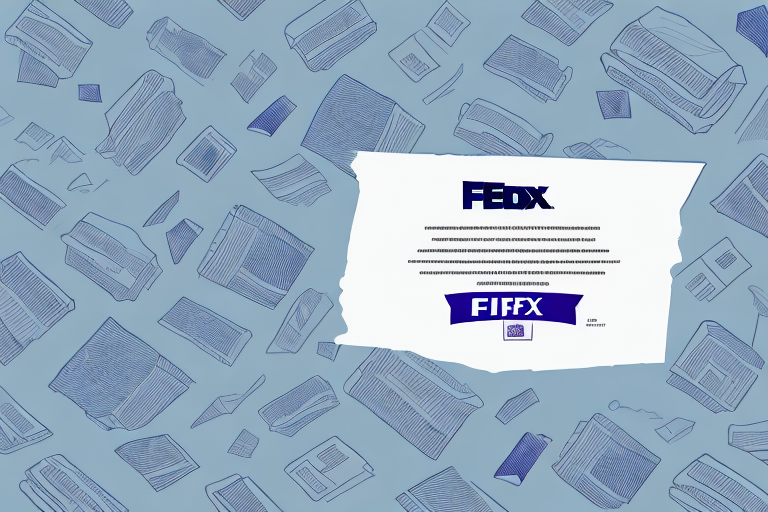Understanding FedEx Declared Value: A Comprehensive Guide
Shipping a package through FedEx can be straightforward, but when it comes to high-value items, additional considerations are necessary. One essential aspect to understand is declared value and how it works with FedEx. In this guide, we'll explore everything you need to know about declared value, including its definition, importance, determination process, FedEx's charge calculations, and more. We'll also provide tips for saving on fees and filing claims for lost or damaged packages.
What is Declared Value and Its Importance in Shipping
Declared value is the maximum amount that FedEx will reimburse a shipper in the event of a lost or damaged package. It's important to note that declared value is not the same as insurance. FedEx refers to declared value as a "limit of liability," and it is automatically applied to every package shipped by the company.
Difference Between Declared Value and Insurance
While declared value provides a basic level of protection, it doesn't offer comprehensive coverage like shipping insurance. Insurance can cover gaps beyond the declared value, offering more extensive protection for high-value items.
Impact on Reimbursement
Declared value significantly affects the reimbursement you receive if a package is lost or damaged. For instance, shipping an item worth $100 without declaring its value means FedEx is only liable up to $100. However, declaring the item's value as $500 increases FedEx's liability up to $500.
Benefits of Declaring the Value of Your Shipment
There are several advantages to declaring the value of your shipment when using FedEx:
- Enhanced Security: Demonstrates that you take the security of your items seriously, particularly for high-value goods.
- Faster Reimbursement: Facilitates quicker reimbursement processes as FedEx has the necessary information on file.
- Compliance with Requirements: Meets contractual agreements, warranties, or other legal requirements that may mandate a declared value.
- Cost Management: Helps avoid unexpected costs by ensuring adequate coverage, preventing minimal liability reimbursements.
- Inventory Tracking: Assists in tracking inventory and managing business finances more effectively.
How to Determine the Correct Declared Value for Your Package
Accurately determining the declared value of your package involves assessing the item's worth based on several factors:
- Age: Younger items might retain higher value.
- Condition: Items in better condition are typically valued higher.
- Rarity: Rare items may warrant a higher declared value.
- Replacement Cost: The cost to replace the item should be considered.
If unsure about the appropriate value, consult expert appraisals or refer to purchase receipts and appraisal documents. Precise declaration is crucial as it directly impacts the liability limit applied by FedEx.
Considerations for Fragile or Perishable Items
Some items, such as fragile or perishable goods, may have limited declared value due to their nature. Ensure that packaging meets FedEx's guidelines to maximize coverage.
Consequences of Incorrectly Declaring Value
Incorrect declaration of value can lead to several issues:
Underinsurance
Underdeclaring the value may result in insufficient reimbursement if the package is lost or damaged.
Overdeclaring and Potential Penalties
Overstating the value can lead to investigations and possible denial of claims if discrepancies are found.
Accurate assessment and honest declaration are essential to avoid these potential pitfalls.
FedEx's Declared Value Charge Structure
FedEx calculates declared value charges based on the item's declared value using a tiered pricing structure. The charge per $100 of declared value varies depending on the shipment's destination, type, and value amount.
For example, as of 2024, the declared value charge for a domestic package valued between $101 and $300 is $3.15, whereas for a package valued between $301 and $400, the charge is $4.20. It's advisable to check the latest pricing on the FedEx Declared Value page before shipping to ensure accurate cost estimates.
Declared Value vs. Insurance Fees
Declared value charges are distinct from insurance fees. While declared value covers a basic level of liability, insurance provides additional coverage beyond the declared value for greater protection.
International Shipping Considerations
For international shipments, declared value may incur customs duties and taxes based on the package's value. Research the destination country's customs regulations and declare the value accurately to avoid unexpected fees or delays.
Tips for Saving on Declared Value Fees
Managing declared value charges effectively can lead to significant savings:
- Consolidate Shipments: Combine multiple items into a single shipment to reduce overall declared value charges.
- Purchase Additional Insurance: For very high-value items, additional insurance might offer more comprehensive coverage at a competitive rate.
- Optimize Packaging: Properly packaging items can minimize the risk of damage, potentially reducing the need for higher declared values.
When to Purchase Additional Insurance for High-Value Items
If the value of your goods exceeds FedEx's liability limits, consider purchasing additional shipping insurance. This is particularly important for items such as jewelry, electronics, or antiques.
Ensure you review the insurance policy's terms and conditions to confirm it covers your specific needs, including any exclusions related to packaging or international shipping.
Common Misconceptions About Declared Value and Shipping Insurance
Understanding the nuances between declared value and shipping insurance can prevent misunderstandings:
Declared Value is Not Insurance
Many believe that declared value replaces the need for insurance, but they serve different purposes. Declared value offers a basic liability limit, whereas insurance provides extended coverage.
Automatic Full Coverage Assumption
Some shippers assume that FedEx will cover the full value of their goods without proper declaration. Accurate and honest declaration is necessary to ensure appropriate coverage.
Liability Limits in Case of Loss or Damage
FedEx has specific liability limits based on the type of items being shipped:
- Documents: Up to $100
- Jewelry: Up to $500
- Computers and Electronics: Up to $1,000
Understanding these limits is crucial to avoid being underinsured. Review FedEx's liability limits before shipping your goods.
How to File a Claim for Damaged or Lost Packages with FedEx
If your package is lost or damaged during shipping, follow these steps to file a claim with FedEx:
- Visit the FedEx claims page and complete the online claims form.
- Provide supporting documentation, such as photos of the damaged item and purchase receipts or invoices.
- Submit the claim promptly, as there are time limits for filing.
Ensure all information is accurate and complete to expedite the reimbursement process.
Best Practices for Packaging High-Value Items
Proper packaging is essential to protect high-value items during transit:
- Use Sturdy Materials: Employ strong boxes and double-boxing if necessary.
- Protect Fragile Items: Wrap items in bubble wrap or packing peanuts and label the package as "fragile."
- Secure Packaging: Ensure no loose items or rattling contents within the package.
- Follow FedEx Guidelines: Adhere to FedEx's packaging guidelines to ensure eligibility for coverage.
The Importance of Accurate Documentation
Accurate documentation is crucial when shipping with declared value:
- Keep Receipts and Invoices: Maintain copies to verify the item's value.
- Use Correct Shipping Forms: Ensure forms are filled out accurately for billing and insurance purposes.
- Label Packages Correctly: Proper labeling helps in categorizing the package for appropriate handling.
Comprehensive documentation supports your claims and ensures that shipments are processed smoothly.
Conclusion: Ensuring Peace of Mind with FedEx Declared Value
Understanding FedEx's declared value is essential for anyone shipping high-value goods. By accurately declaring the value, properly packaging items, and considering additional insurance where necessary, you can protect your shipments against loss or damage. Leveraging these practices not only safeguards your investments but also streamlines your shipping process, providing peace of mind and fostering business efficiency.






















